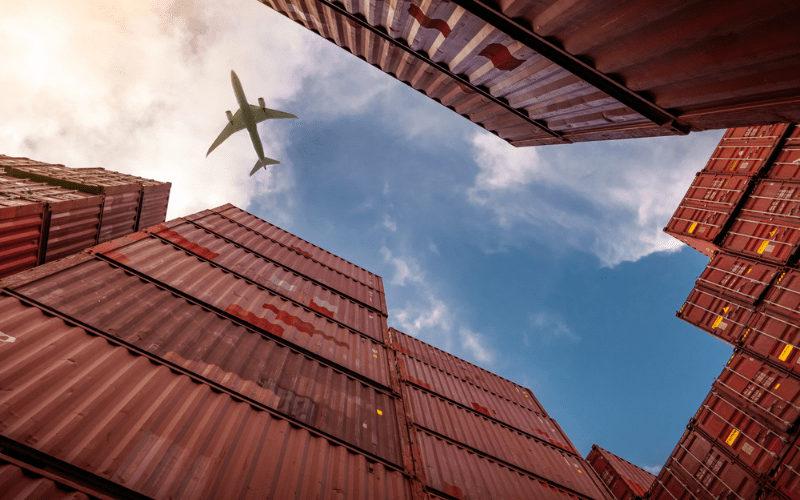As we watch Russia’s invasion of Ukraine unfold, the real cost of this war is plain: lost lives, families that are forever altered, and destroyed communities. In her recent blog post, Anusha Shankar discussed this tragedy, as well as the need to help Blue Yonder customers navigate the significant supply chain challenges that have resulted from this war — such as blocked transportation lanes and airspace, production shutdowns, dramatic increases in fuel costs, and product and material shortfalls.
The long-term effects could be devastating, including global food shortages and record levels of inflation, both in Europe and the United States. Two top European shippers — Maersk and DSV — have warned that freight costs will likely remain high well into 2022, adding to the global supply chain chaos.
As we wait and fervently hope for a peaceful resolution, we also need to face the practical challenge of keeping customer supply chains up and running — both now and later, as the full impacts of this crisis unfold. And, unfortunately, history has taught us that this won’t be the last crisis we face. The world’s complex supply chains, which span the globe and often involve dozens of participants, are vulnerable to geopolitical events, natural disasters and a host of other risks that can impact the extended network.
As supply chain professionals, it’s incumbent that we solve crisis-related challenges. While our minds and hearts will always be first concerned with the humanitarian cost of such events, we must also identify real-time actionable intelligence and solutions to help in successfully navigating each new disruption and delivering critical products reliably, at optimal costs.
Increasing Visibility and Control Amid the Chaos
The prospect of continued supply chain upheaval may seem overwhelming, but there is one extremely positive development. The broad availability of advanced artificial intelligence (AI) and machine learning (ML) makes it possible for supply chain professionals to increase end-to-end visibility, identify disruptions, conduct analysis and arrive at optimal resolutions faster than ever. Because AI- and ML-fueled decision engines exceed the cognition of human planners, they can conduct analysis and execute a response at a speed and level of confidence most of us never thought possible.
Blue Yonder’s proven AI- and ML-enabled solution, Luminate Control Tower (LCT), now features a Crisis Dashboard capability that’s purpose-built to assess and mitigate risk during times of chaos. For three customers trading in the Russia-Ukraine conflict zone, custom LCT dashboards are currently tracking more than 118,000 inbound and outbound deliveries, composed of 3,000 items and valued at more than $150 million.
As conditions change in the Russia-Ukraine conflict area, these robust dashboards help Blue Yonder customers monitor, identify and track all impacted deliveries, both inbound and outbound, in near real time. Logistics planners can identify suppliers shipping out of the conflict area with deliveries at risk, positioning them to define alternative strategies. Similarly, the dashboards track inbound deliveries to the conflict area, including item/location and cost information, so alternative inventory delivery sites or shipping routes can be identified.
As we’ve all seen in the news coverage of the Russia-Ukraine conflict, conditions are changing minute-by-minute. Specialized Blue Yonder Crisis Dashboards provide supply chain teams with a near real-time, data-driven perspective that leads to the best possible combination of service and cost at any given time. It replaces guesswork and confusion with accuracy and certainty, even in an uncertain landscape.
Luminate Control Tower: Illuminating the Risks and Opportunities
The powerful new Crisis Dashboard capability is just one aspect of Luminate Control Tower’s full functionality for monitoring end-to-end risks across the supply network, providing companies with a new level of near real-time visibility and control. The world’s leading supply chain teams are already leveraging the power of LCT to visualize both risks and opportunities — then drive an intelligent, synchronized response across the extended supplier and customer network.
“We’ve been gratified to see the positive impact Luminate Control Tower has made for our customers during the supply chain challenges of the past two years, including the COVID-19 pandemic, labor shortages, and transportation roadblocks such as port closures,” says
Michelle Brunak, Corporate Vice President at Blue Yonder. “Now we’re delighted to offer a new capability that will help them navigate the growing supply chain challenges posed by the Russia-Ukraine conflict, as well as other crisis situations.”Blue Yonder’s Luminate Control Tower (LCT), delivered in a software-as-a-service (SaaS) model, is designed to deliver near real-time visibility across the complex, end-to-end supply chain. LCT acquires enterprise data from various source systems (customers, orders, inventory, shipments) and combines it with near real-time external data streams (weather, maritime traffic, port conditions) to provide visibility to disruptive events. But that’s only the beginning. LCT then applies advanced AI/ML and predictive analytics to assess the impact of these events and recommend strategic interventions and course corrections. Armed with these powerful insights, companies can collaborate with their extended supply chain partner network in a situation-room environment to execute a synchronized and orchestrated response that minimizes negative impacts, maintains high service levels and protects profit margins.

